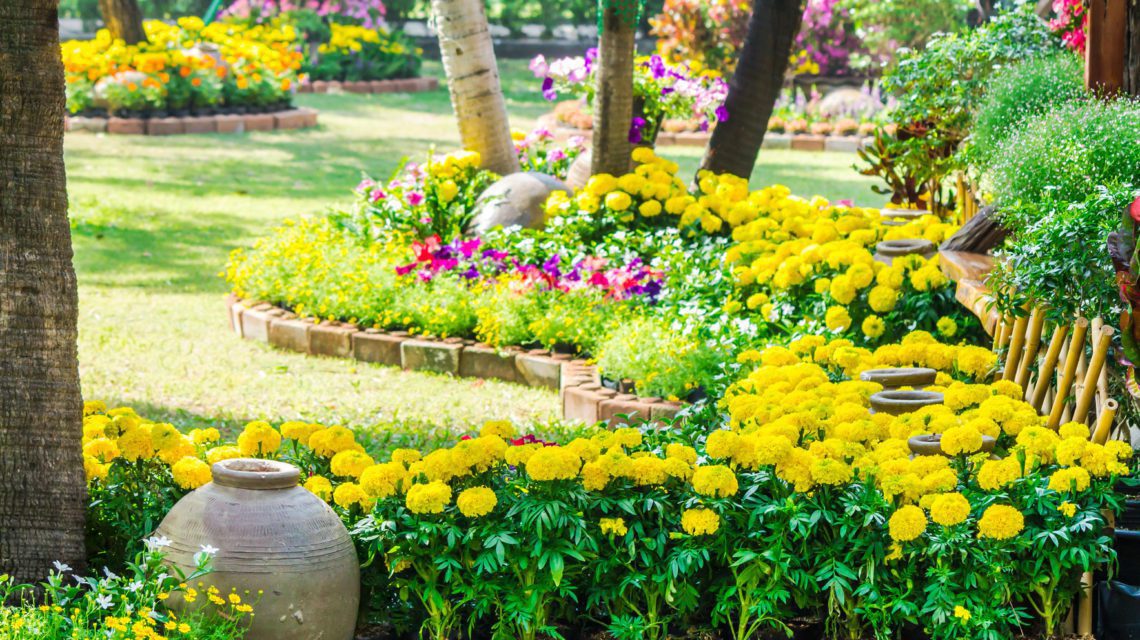Are you planting a new lawn or re-seeding an old one soon? You’ll find that Kentucky bluegrass-ryegrass mixes or bluegrass-fine fescue mixes make up the overwhelming majority of what most sod farms in Utah sell. You can plant other grass types if you plant from seed instead, but some types of grass make much better lawns than others. Read on to learn the pros and cons of different grasses and the recommended grass types for Utah lawns.
Skip to a Section:
Preparing Soil for Lawns
Before you plant your lawn, make sure your soil is well-suited to your grass of choice. Soils with too much sand or clay can be equally detrimental to your lawn in the long run. Sandy soil allows water to flow through it too quickly, so the roots cannot soak up enough water. Clay soil holds water too well, so the roots can’t penetrate very deep, and the water stays too shallow. This can result in compacted soil that produces excessive water run-off.
To balance out your soil, you’ll need to add microbes and nutrients to it. A great way to do this is to add a layer of compost or manure to the topsoil and till the soil before planting.
If your lawn is already established, you can top-dress the lawn with compost or manure instead. Simply aerate, then evenly spread a fine layer of compost over the surface of the lawn. Add grass seed to the compost to help thicken the lawn if desired. After spreading the nutrients, you should water the lawn. You can skip the aeration step if you prefer, but we suggest it because it helps nutrients reach the target areas.
Common Turfgrasses in Utah
Many types of grass make lovely, soft lawns for homeowners. However, when very different types of grass get mixed together, the invading grass usually looks unsightly—even if they are both common turfgrasses. For this reason, you should be careful when choosing which grass type to over-seed your lawn with when it starts thinning from age.
Some grasses (orchard grass, crabgrass, etc.) are not intended for use in suburban landscapes at all. To prevent wide-bladed weed grasses from growing in your lawn, overseed in the fall if your lawn starts thinning, and practice proper watering, mowing, and fertilizing guidelines for your grass type. A healthy, thick lawn is the best defense against invading wide-bladed weed grasses.
Bermuda Grass (and Other Warm-season Grass Types)
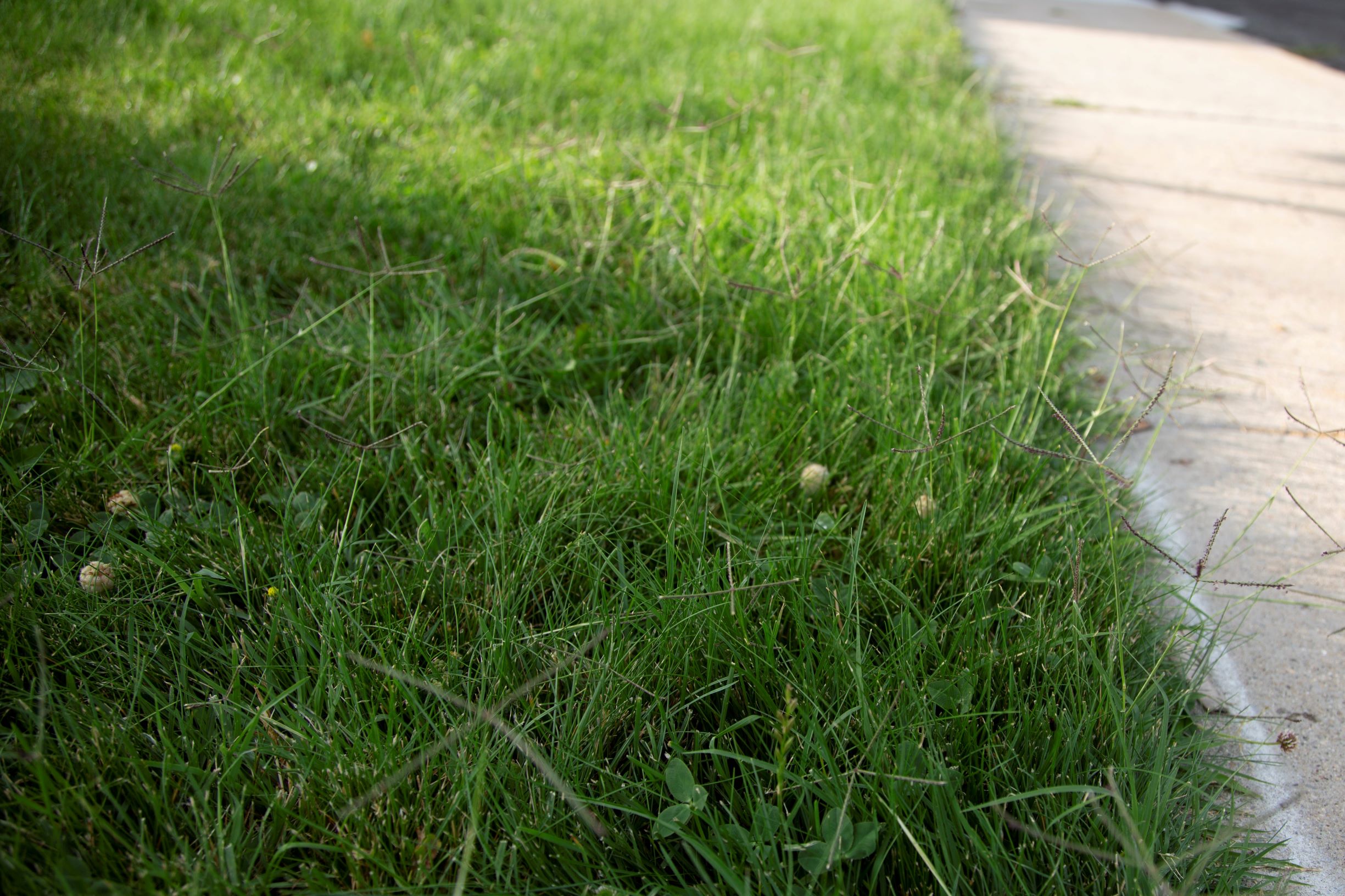

- Warm-season grass
- Drought tolerant
- Rough texture
- Dormant in spring
Warm season grasses are not recommended for Utah lawns.
Bermuda grass is a warm-season grass, so lawns in southern states are more likely to have this type of grass. You may see it in southern Utah occasionally, but it is not recommended for lawns in northern Utah. Cool season grasses tend to grow better in northern Utah’s climate because they can handle harsh winters. When you see Bermuda grass in northern Utah, it is usually an invading grass in Kentucky bluegrass lawns.
Some types of Bermuda grass can go dormant to survive freezing winters, but most are meant for climates that do not reach freezing temperatures. This means that this type of grass is still brown and dormant in spring and doesn’t look nice until summer.
Bermuda grass usually has thicker blades that are a lighter shade of green than Kentucky bluegrass. While Bermuda grass is usually thick and coarse, you can find softer varieties with thinner blades for landscapes.
This grass type is somewhat drought tolerant. However, it struggles in shady areas and is susceptible to fungal diseases if it is overwatered and does not receive the amount of sunlight it needs.
St. Augustine and zoysia grass types are also warm-season grasses that are primarily seen in southern, humid climates. We suggest you stay away from these types of grasses if you live in northern Utah because, like Bermuda grass, they look unappealing in spring and do not mix well with cool-season grasses.
Fine Fescue
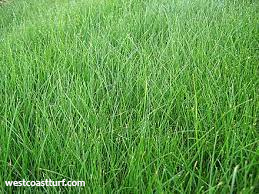

- Cool-season grass
- Struggles in high-traffic areas
- Shade tolerant
- Soft texture with weak structure
Fine fescue is soft and somewhat hearty. However, it’s not considered a very attractive grass because it is a lighter shade of green and has thin grass blades that fold easily. This type of grass is usually used in combination with Kentucky bluegrass to fill in landscapes quickly.
Fine fescue is drought resistant and very shade tolerant. It is also tolerant of poor soils. This makes it a good choice for areas with lots of shade—if you don’t mind how it looks.
The downside to fine fescue is that it does not handle foot traffic well. It’s not a great choice for people who plan to spend a lot of time on the lawn because it crumples easily.
Kentucky Bluegrass
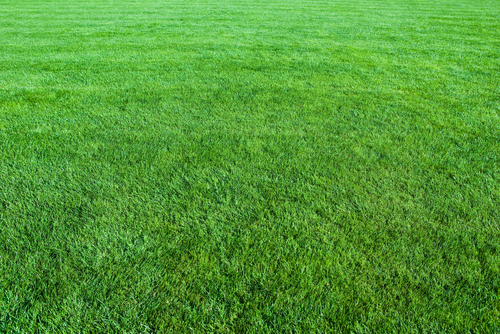

- Cool-season grass
- Susceptible to grubs and disease
- Looks great in spring and fall
- Struggles in drought
Bluegrass-ryegrass blends are a good sod option.
Kentucky bluegrass is perhaps the most popular cool-season grass used in Utah landscapes because it is soft, durable, and holds up well to foot traffic. In addition, it looks green and healthy in spring and fall. If you plan to lay sod in your yard, it will likely be a Kentucky bluegrass mix because sod farms predominantly grow this type of sod.
The downside to this type of grass is that it is highly susceptible to various diseases and insect infestations. It’s also sensitive to drought stress and is easily damaged. Kentucky bluegrass requires a lot of care, especially in the summer. High-traffic areas in particular will need extra fertilizer to stay healthy.
Bluegrass especially struggles in Utah’s drought-heavy, hot summers. It always struggles in high heat, but it can survive if it receives proper care during this time of year. To keep your bluegrass healthier in summer, train the roots to sink deep into the ground with a deep watering schedule during the growing season. Keep in mind that you may need to cultivate the soil before the roots are able to grow through it.
Perennial Ryegrass
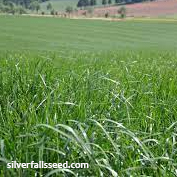

- Cool-season grass
- Pairs with bluegrass
- Disease resistant
- Fast-growing
Ryegrass blends are best for over-seeding bluegrass lawns.
Ryegrass is a cool-season grass that is best used in combination with other types of grass. Perennial ryegrass is relatively soft, grows quickly, and has a dark green color like Kentucky bluegrass. This helps it blend in well with bluegrass.
It is more drought tolerant than bluegrass, but not as resistant to drought as tall fescue. It is also disease resistant and less susceptible to insects like billbugs that eat the roots of the lawn.
For these reasons, it makes a great alternative to other types of grass. If you want to use pre-cut sod on your property, choose a bluegrass-ryegrass blend for the best long-term results. If you need to over-seed your pre-existing bluegrass lawn, a ryegrass-bluegrass blend is your best option.
Turf-type Tall Fescue
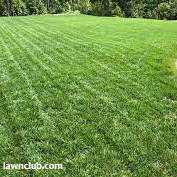

- Cool-season grass
- Bunch-type growth pattern
- Drought resistant
- Disease and insect resistant
Turf-type tall fescue is best for seeding a brand-new lot from scratch. DO NOT use it to over-seed an existing bluegrass lawn.
Turf-type tall fescue is often used in lawns. However, it doesn’t mix well with other types of turfgrass because it grows in bunches. This means that when it invades Kentucky bluegrass and other types of lawns, it creates noticeable patches of coarse, unsightly grass in the lawn. For this reason, you should NEVER over-seed an existing bluegrass lawn with tall fescue.
This grass type can be a great option for new lawns in Utah because it has deep roots and is very drought tolerant. It’s also more disease-resistant, insect resistant, and tolerant of foot traffic than bluegrass.
Tall fescue is usually coarser than bluegrass, but scientists have developed turf-type varieties that are softer and similar to Kentucky bluegrass.
We recommend this type of grass if you’re growing a lawn from scratch. Because tall fescue does not mix well with others, you’ll need to make sure your soil is free from other grasses before attempting to grow this type of grass. Turf-type tall fescue is also not readily available at sod farms, so if you choose this grass, you’ll need to grow it from seed.
Tall fescue lawns will also need to be over-seeded (especially in the first year) to prevent patchiness because this grass type grows in bunches and does not spread as bluegrass does. However, these are small trade-offs for the drought, disease, and grub resistance that this grass type offers.
Utah-friendly Plants to Complete Your Landscape
While considering the type of grass you want for your lawn, you should also consider other plants that thrive in Utah to complete your landscape. If you want to expand your front yard to include flowers and shrubs, just make sure you pick plants that thrive in Utah. Following are some shrubs that often do well in Utah:
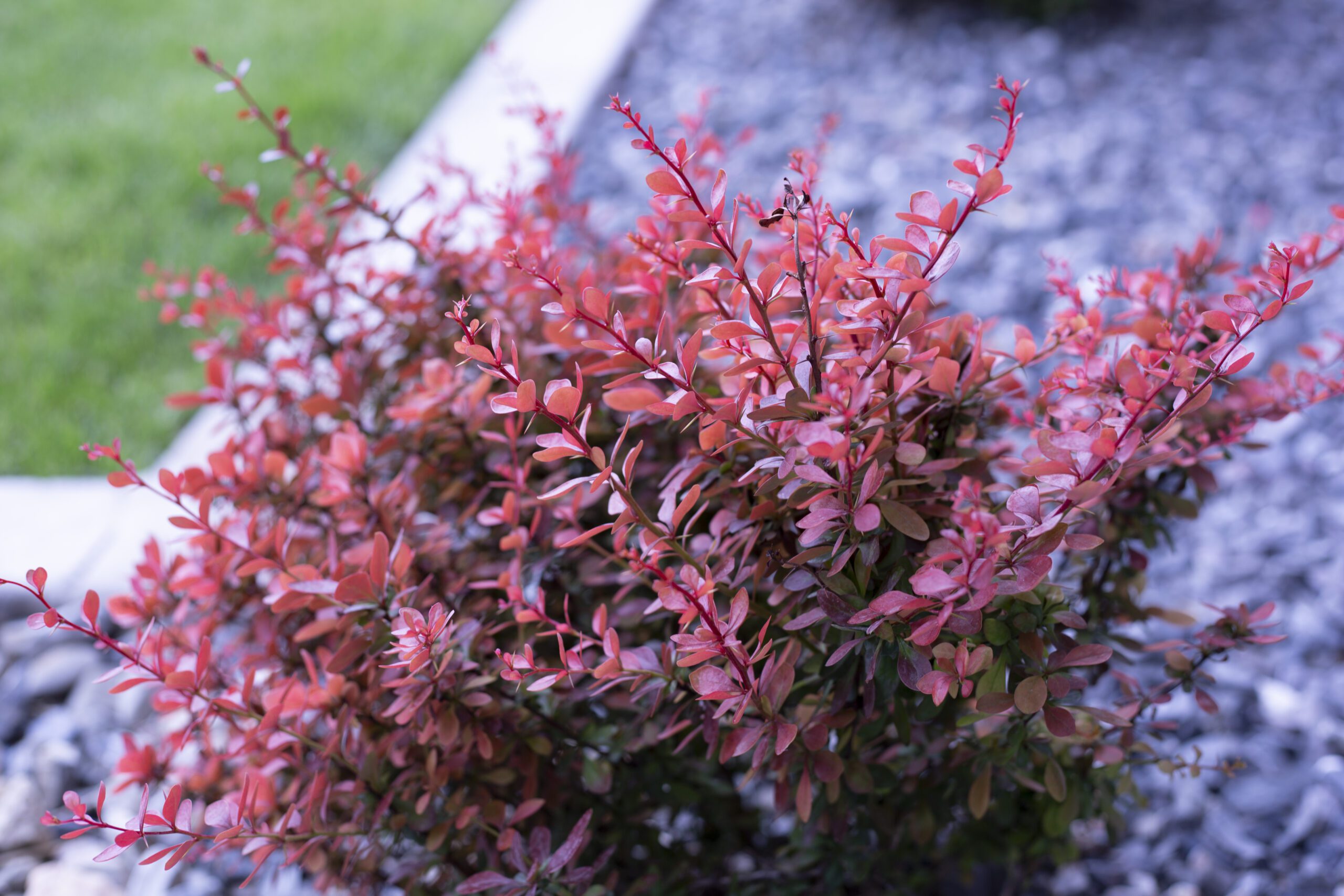

- Barberry Bushes
- Boxwoods
- Dwarf Korean Lilacs
- Miss Kim Lilacs
- Viburnums
- Cherry Laurels
- Yews
- Juniper Shrubs
Perennial plants are generally very hardy and will grow back every year. This makes them a great low-maintenance option. Some perennial flowering plants that do well in Utah include the following:
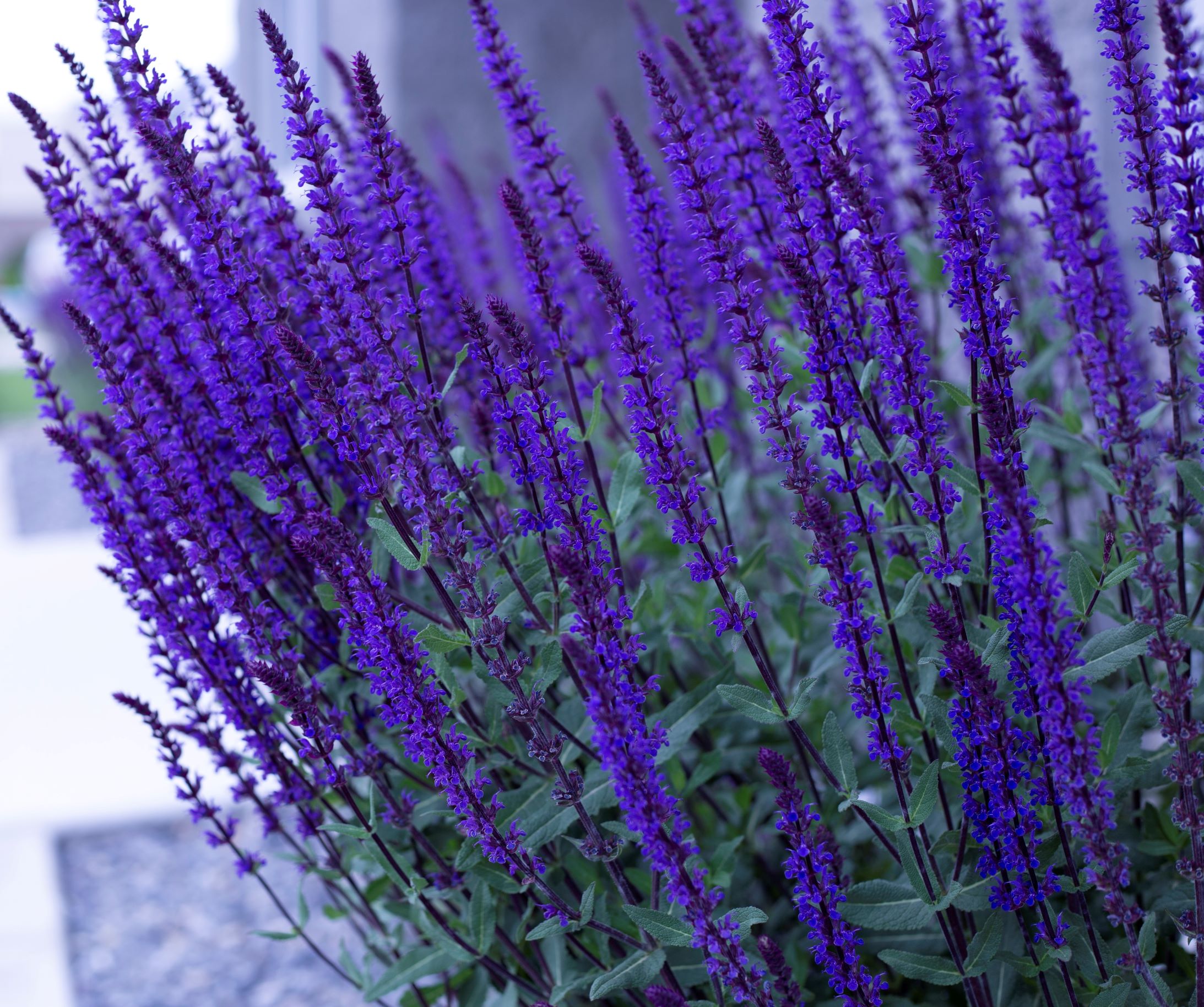

- Yellow Tickseed Coreopsis
- Munstead Lavender
- John Cabot Rose
- September Charm Windflower
- McKana Columbine
Though Stewart’s doesn’t sell grass seed or offer sod installation, our award-winning lawn spraying program can keep your lawn healthy and green throughout the year. Text (or call) our office at 801-226-2261 and ask to speak with one of our lawn specialists for more information and a free service quote today!



